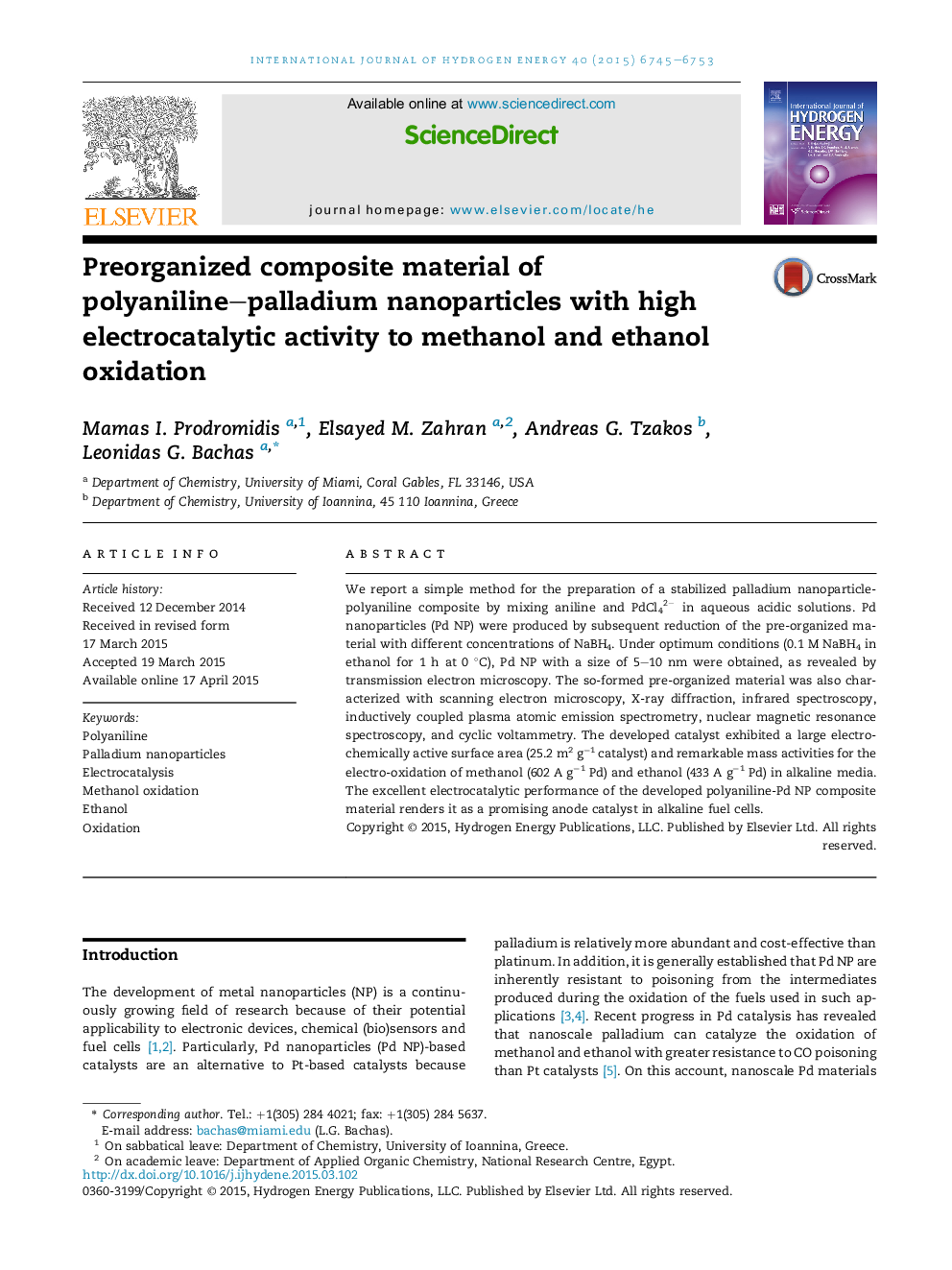| Article ID | Journal | Published Year | Pages | File Type |
|---|---|---|---|---|
| 1271185 | International Journal of Hydrogen Energy | 2015 | 9 Pages |
•Simple electroless approach for the synthesis of Pd NP incorporated in polyaniline.•The preorganization of the material allows for spatial distribution of Pd NP.•The nanocomposite demonstrated high electrocatalytic activity for alcohol oxidation.
We report a simple method for the preparation of a stabilized palladium nanoparticle-polyaniline composite by mixing aniline and PdCl42−PdCl42− in aqueous acidic solutions. Pd nanoparticles (Pd NP) were produced by subsequent reduction of the pre-organized material with different concentrations of NaBH4. Under optimum conditions (0.1 M NaBH4 in ethanol for 1 h at 0 °C), Pd NP with a size of 5–10 nm were obtained, as revealed by transmission electron microscopy. The so-formed pre-organized material was also characterized with scanning electron microscopy, X-ray diffraction, infrared spectroscopy, inductively coupled plasma atomic emission spectrometry, nuclear magnetic resonance spectroscopy, and cyclic voltammetry. The developed catalyst exhibited a large electrochemically active surface area (25.2 m2 g−1 catalyst) and remarkable mass activities for the electro-oxidation of methanol (602 A g−1 Pd) and ethanol (433 A g−1 Pd) in alkaline media. The excellent electrocatalytic performance of the developed polyaniline-Pd NP composite material renders it as a promising anode catalyst in alkaline fuel cells.
Graphical abstractFigure optionsDownload full-size imageDownload as PowerPoint slide
